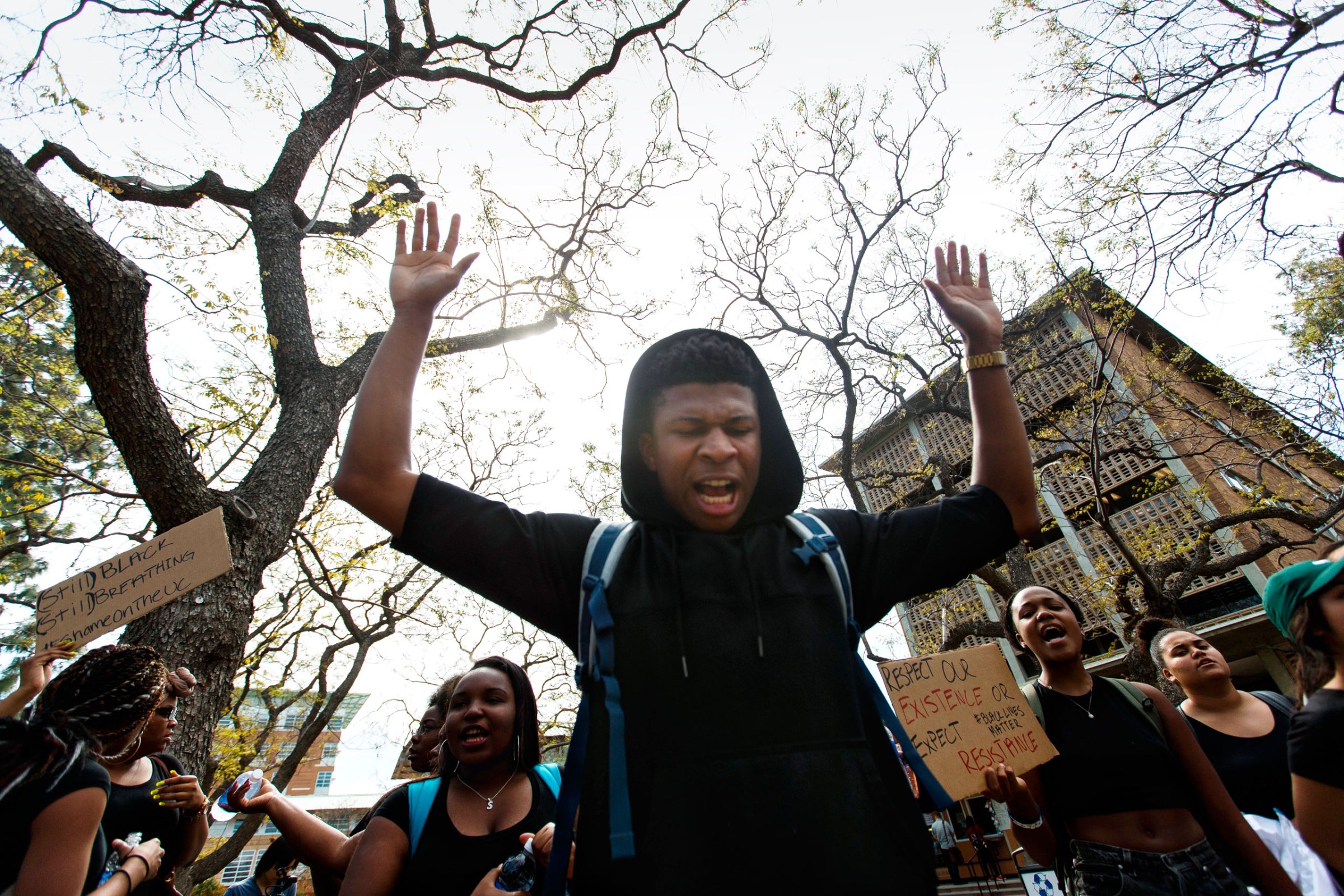
Pity the commencement speakers charged with capping the 2015–16 academic year. After two semesters of vigorous protest at campuses all over the nation, how can the usual chase-your-dreams exhortations suffice?
At the University of Missouri, a graduate student’s hunger strike prompted the football team to announce a walkout, compelling in turn the resignations of the university president and chancellor. At Claremont McKenna College in California, protesters drove out the dean of students. Under pressure, Harvard and Yale did away with the title “master.” And at more than 50 schools in all, student protesters made demands–for greater faculty diversity, new courses, public apologies, administrators’ ousting.
It’s been half a century since we’ve seen U.S. schools so roiled. The latest results from a long-running annual UCLA study, published in February, quantified the phenomenon. The share of freshmen nationwide who said there was a “very good chance” they would participate in a protest while enrolled rose to 8.5% from 5.6% in 2014. (Among black students, the share climbed from 10.5 % to 16%.) These figures were the highest the survey had recorded since it began in 1967, stretching back from the eras of protests against the war in Iraq, the antiapartheid movement, the Kent State shootings and the draft.
Yet for all its ubiquity and urgency, the year’s groundswell–following recent years’ campus actions on sexual assault and student debt–has managed only to baffle the broader public. The movement’s message may have been lost amid the talk of “trigger warnings,” “safe spaces” and all manner of ideas anathema to free-speech advocates.
But animating almost every march, die-in and issuance of demands was a provocative, unassailable claim: Black students matter, and they will no longer tolerate the status quo, no matter the decades of apparent progress in higher ed and elsewhere.
One of the signature achievements of the last century was the reconstitution of America’s higher-education system. After World War II, student bodies at the country’s public and private institutions started to look like America itself. But their faculties have not caught up. Less than 6% of full-time faculty at four-year institutions are African American. Faculty diversity has proved harder to pull off than student-body diversity; the problem comprises not only universities’ struggle to keep professors from leaving but also the difficulty in diversifying doctoral programs.
This gap is pernicious, warping the curriculum and how students see themselves. At Towson University, sophomore Bria Johnson, who protested racism on campus this fall, says her peers draw the wrong lesson when the cafeteria workers are almost all black and the professoriate is almost all white. Adds Bilphena Yahwon, a Towson senior, “Being black on this campus … you know that there’s a me and there’s a them. And you’re always hyperconscious of everything you do. You’re constantly editing yourself. I don’t want to be too black. I don’t want to fit into that stereotype.”
In recent months, university presidents have pledged to address this problem. Yale vowed to spend $50 million on faculty diversity and established an interdisciplinary center devoted to the study of race, indigeneity and transnational migration. Brown has said it will double its faculty diversity by 2025. And college presidents at less wealthy universities have signed off on protesters’ demands, promising movement on a handful of related issues.
Making black students and professors feel truly welcome at predominantly white U.S. colleges will require heavy lifting. And anything that does work will take years to show results. There’s a reason President Obama chose Norman Rockwell’s 1964 painting The Problem We All Live With, about the pains of integration, to hang outside the Oval Office in 2011. Colleges without war chests would be well advised to do their damnedest to promote openness, tolerance and curiosity among their student bodies. Despite the seeming intractability of racial problems on campus, the ex-protesters who will graduate this season deserve an extra cheer for dragging their schools into the future.
More Must-Reads from TIME
- Inside Elon Musk’s War on Washington
- Meet the 2025 Women of the Year
- The Harsh Truth About Disability Inclusion
- Why Do More Young Adults Have Cancer?
- Colman Domingo Leads With Radical Love
- How to Get Better at Doing Things Alone
- Cecily Strong on Goober the Clown
- Column: The Rise of America’s Broligarchy
Write to Jack Dickey at jack.dickey@time.com